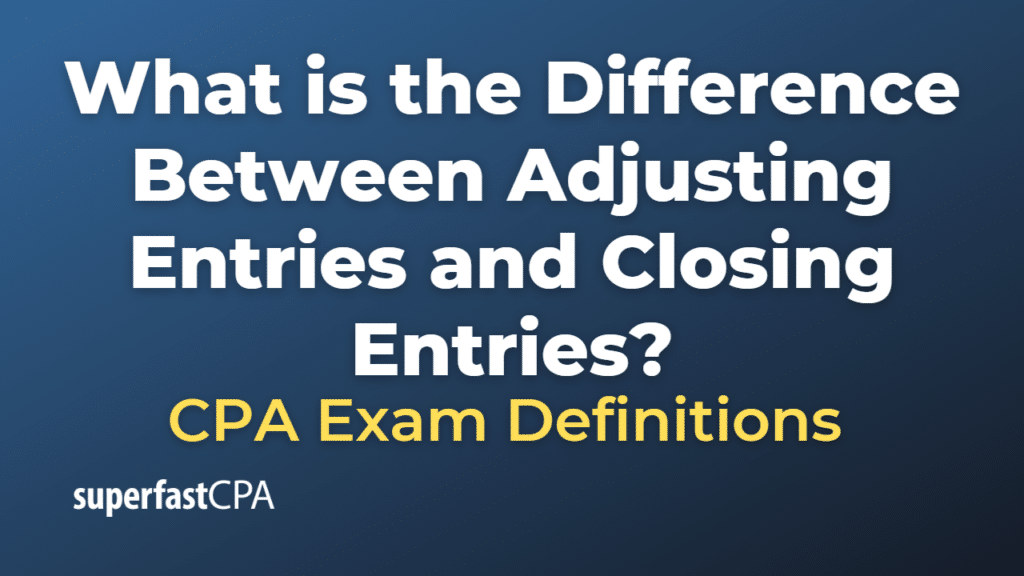Difference Between Adjusting Entries and Closing Entries
Adjusting entries and closing entries are both important parts of the accounting cycle, but they serve different purposes and are done at different stages in the process.
Adjusting Entries:
Adjusting entries are made at the end of an accounting period (usually at the end of the month, quarter, or year) to update account balances before financial statements are prepared. The goal is to ensure that revenues and expenses are recognized in the period in which they are earned or incurred, in accordance with the accrual basis of accounting.
Adjusting entries can be used to record:
- Accrued revenues: Revenue that has been earned but not yet recorded because cash has not been received.
- Accrued expenses: Expenses that have been incurred but not yet recorded because cash has not been paid.
- Prepaid expenses: Expenses that were paid in advance and have been used up in the current period.
- Unearned revenues: Cash received in advance for services to be performed or goods to be delivered in the future.
Closing Entries:
Closing entries are made at the end of the accounting period after financial statements have been prepared. These entries serve to reset the balances of temporary accounts (i.e., revenue, expense, and dividend accounts) to zero in preparation for the new accounting period. The net income or loss for the period and any dividends paid are transferred into retained earnings.
In summary, adjusting entries are made before preparing financial statements and serve to update account balances in line with the accrual basis of accounting. Closing entries, on the other hand, are made after the financial statements are prepared and serve to reset the balances of temporary accounts to zero, ready for the next accounting period.
Example of the Difference Between Adjusting Entries and Closing Entries
Here’s an example of both an adjusting entry and a closing entry.
Adjusting Entry Example:
Imagine a company, Building Corp, pays for 12 months of insurance coverage on January 1st for $12,000. This is initially recorded as a prepaid expense. By the end of January, Building Corp has used one month of this coverage, or $1,000 worth. An adjusting entry needs to be made to reflect this.
The adjusting entry would be:
- Debit Insurance Expense $1,000
- Credit Prepaid Insurance $1,000
This entry reduces the balance of the Prepaid Insurance account and increases the Insurance Expense account, reflecting the cost of the insurance that has been used up during January.
Closing Entry Example:
Now let’s imagine that Building Corp has completed its accounting period (say it’s a calendar year) and is preparing to close its books. The company has $200,000 in revenue and $150,000 in expenses for the year.
The closing entries would be:
- Close the Revenue account:
- Debit Revenue $200,000
- Credit Income Summary $200,000
- Close the Expense accounts:
- Debit Income Summary $150,000
- Credit Expenses $150,000
- Close the Income Summary account to Retained Earnings:
- Debit Income Summary $50,000 (the net income: $200,000 – $150,000)
- Credit Retained Earnings $50,000
These entries reset the balances of the revenue, expense, and income summary accounts to zero and transfer the net income for the period into retained earnings.
In summary, adjusting entries are made to ensure the correct amount is reported in each account at the end of the accounting period (before the financial statements are prepared), while closing entries are made to reset the balances of the temporary accounts after the financial statements have been prepared (getting them ready for the next accounting period).













